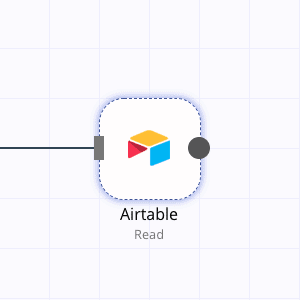
Benefits of Using Templates, Teams, and Bases
What is Airtable?
For those of you sleeping under a rock, Airtable has been gaining momentum and market share over the last several months. From the Airtable API to Airtable Blocks, you’ve probably heard colleagues talk about how awesome it is. You’ve probably heard them say something along lines like, “Airtable is like a spreadsheet on steroids.” Well…that’s a pretty good summary of what it is.
Airtable is the best of both worlds between a spreadsheet and a database. It is highly flexible, configurable, and has an easy to use API. The Airtable API is what makes such a highly valuable choice among its peers.
Imagine turning an average employee into a database admin. That is what you could accomplish with Airtable. In the next section we’ll go over all the best reasons to start using Airtable right away.
1. Airtable Forms
A very powerful feature of Airtable are its use of front end forms. You can quickly turn a spreadsheet into an easy to use form that is embeddable into your website as natively as you can design it. This is a big feature when compared to Google Forms! Rows populated by the form input can then be linked to other data inside the table, or “base” as they call it. This gives you the same power of a MySQL database, but in a more user friendly environment.

2. Collaboration
Airtable allows multiple users to be working on the same data set at the same time. This means you don’t have to email out spreadsheets with wacky filenames like v1.2-Final-Final.xlsx at the end of them (LOL). Similar to Google Sheets, Airtable allows users to redo/undo and it automatically saves to the cloud each time a change is made. That is pretty much where the similarities end. With Airtable, you can store images into a cell, encrytped data, multiple date-parts, even barcodes with their latest update. The flexibility of their data inputs makes this a superior choice to anything available today.
3. Publishing Views
This feature should fall under number 2 (collaboration), but it is so cool and important that it belongs on its own. The reason is simple, let’s say the customer support team needs to have access to customer finance data from the finance team. The finance team need not copy and paste the specific data into a new spreadsheet just to share with the customer team. They can create a published “view” to share with the customer support team. This means the CS team will only have access and see relevant data. This feature saves time and confusion since finance will be adding to their “source of truth” data set consistently, therefore updating the CS view without having to do any extra work.
4. Block Elements
Blocks are a close 1st place feature, almost tied with the API. Airtable Blocks allow a user to extend functionality of their base with built-in apps. For example, you have customer order data that gets input through the front-end form. With that data, you can you can create an invoice template in blocks, and automatically create invoices to print out and put in the packing slip for your end-client. You could even setup a task to have them downloaded as PDFs and emailed to your user if you use a service like Workload’s Automation consulting tools.

5. Airtable API
With the Airtable API, the possibilities are virtually limitless. You can connect, integrate, and automate almost any 3rd party application such as Stripe, Asana, Trello, HubSpot, etc. The list goes on and on.
Recently for one of our clients who has a recruiting team, we were able to automate a major time wasting task with Airtable’s API. They needed to take information from a job candidate’s onsite interview and create a graphic called a “Panel Printout”. The panel printout is a piece of paper given to the candidate on their arrival with key information like who they’ll be meeting with and at what time, the guest wifi information, and the location of restrooms and snack bar.
It would usually take a recruiting coordinator 30 minutes to create each panel printout. Worse than that, each recruiting coordinator had a different “artistic ability” when using graphic design tools to perform the task. Plus, most recruiting coordinators don’t like to do anything else other than schedule interviews. It was asking a bit too much out of them.
We were able to take the information about the interview, create an Airtable Block template, and allow them to print out a standardized look and feel to their panel printouts, saving them precious time at their high-growth startup.
How can Workload Help Me?
We specialize in API automation, integration, and connections just like the one described above. If you’d like a free consultation and a quote, we are very reasonably priced compared to the competition and other “DIY” style apps that are out there. Automating tasks isn’t for feint of heart and you should always consult with someone who knows what they’re doing. Many automation sequences require lots of thought and edge case management.
The good news is this: once you start automating tasks, you can’t stop! You’ll start thinking of all sorts of ways to automate and streamline your business tasks so you can focus on what you like to do best.
[contact-form-7 id=”1066″ title=”Notify Me When Airtable Launches”]

